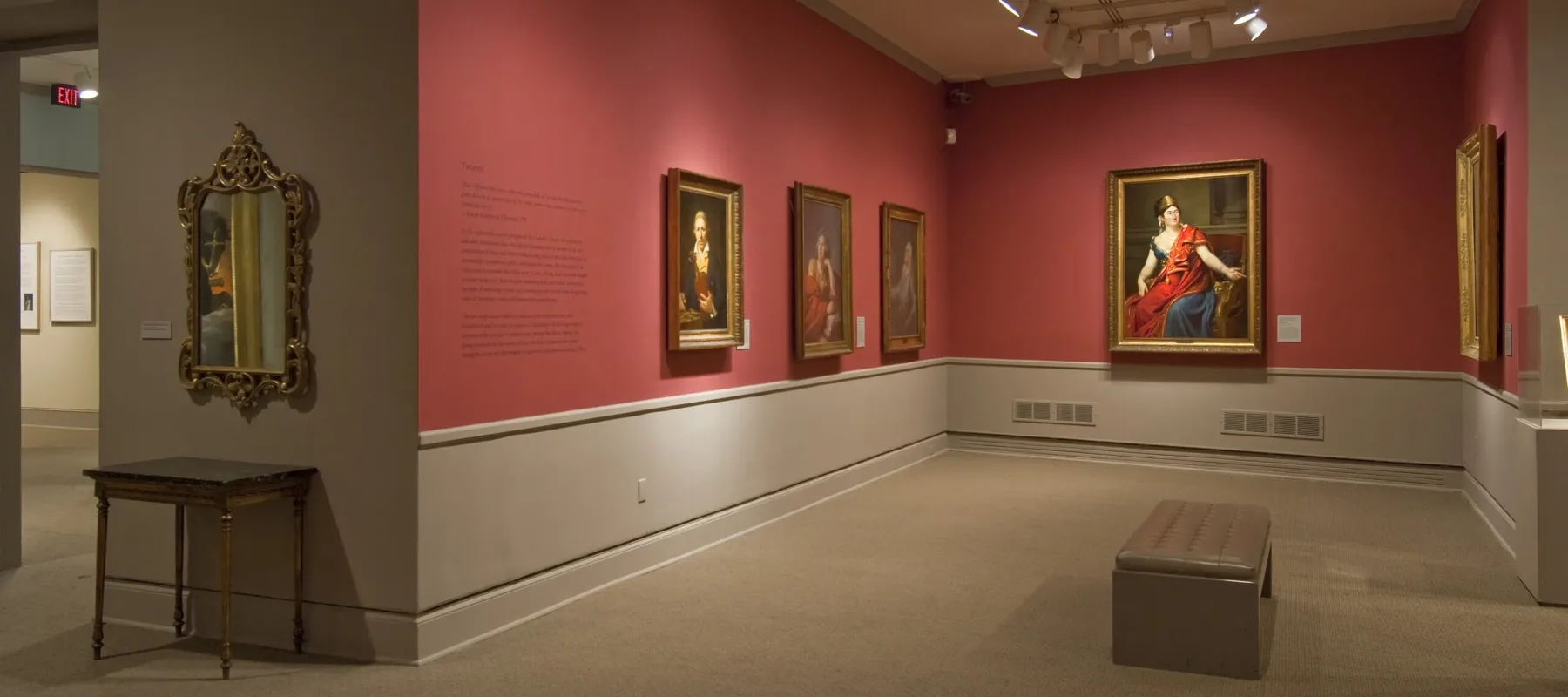In Royalists to Romantics: Women Artists from the Louvre, Versailles, and Other French National Collections, 77 works by 35 artists display the talents of French Revolution-era women artists. Their paintings are windows into their careers and the singular challenges of their time. The catalogue that NMWA has published to illustrate Royalists to Romantics includes essays as well as individual artist biographies that give insight into the lives of women artists working in France between 1750 and 1848. This excerpt explores the life of one the the show’s featured artists, Marie Guilhelmine Benoist.

The career of Marie Guilhelmine Benoist (Paris, 1768–Paris, 1826) was profoundly entwined with the politics of the Revolutionary era. In the 1780s Benoist and her sister, Marie-Élisabeth Leroulx de la Ville (1770–1842), studied with Jacques-Louis David (1748–1825) and Élisabeth Louise Vigée-LeBrun.¹ A controversy arose in July 1787, when the young women’s presence in David’s Louvre studio troubled the comte d’Angiviller, the director of the Batîments du roi (the royal arts administration), who objected to the mingling of the sexes in a royal palace.² Benoist’s romantic attachment to the poet Charles-Albert Demoustier (1760–1801) also attracted attention in these years; Demoustier’s 1786 Lettres à Émilie sur la mythologie (Letters to Émilie on [Greek] mythology) were reportedly inspired by her.
Barred from the Académie royale de peinture et de sculpture, which reached its quota of four female members in 1783, Benoist exhibited at the annual outdoor exhibitions held at the place Dauphine, on the Île de la Cité, from 1784 to 1789. There she displayed pastel studies as well as self-portraits, portraits, and sentimental genre scenes painted in oil. In 1791 she took advantage of the Salon’s open exhibition policy, exhibiting three narrative paintings in the Louvre that year.
Royalist allegiances generated problems, however. Benoist’s father, René Leroulx-Delaville, served in Louis XVI’s administration and in 1793 the artist married Pierre-Vincent Benoist, who fled France later that year to avoid arrest; he was accused, in a warrant signed by Jacques-Louis David, of plotting to rescue Marie-Antoinette from prison. In 1795, with hostilities ended, Madame Benoist was reunited with her husband, exhibited at the Salon (after a hiatus), received a financial award from the government, and was granted coveted lodgings in the Louvre.

The nineteenth century brought still greater successes. Benoist’s best-known work, the Portrait of a Negress (Musée du Louvre, Paris),³ caused a stir at the 1800 Salon. Following Napoléon’s coup d’état of 18 Brumaire (November 9, 1799), Monsieur Benoist was appointed to the Ministry of the Interior, and Madame joined the cadre of artists disseminating images of Napoléon and the imperial family throughout the First Empire. Several of these state portraits appeared at Salons, where they attracted additional commissions. Benoist earned a second-class medal at the 1804 Salon and opened a school for girls in the same year. She turned increasingly to genre painting at this time, creating works like Reading from the Bible (1810) and The Consultation, or The Fortune-Teller (1812), both seen in this exhibition.
In 1815 the restored Bourbon monarchy appointed Monsieur Benoist to the Council of State. In the interest of decorum, Marie Guilhelmine Benoist abruptly ended her career. She never exhibited again.
1. The seminal source on Benoist is Marie-Juliette Ballot, Une élève de David, la comtesse Benoist, l’Émilie de Demoustier, 1768-1826 (Paris, 1914). The present account is also indebted to Vivian P. Cameron, “Benoist, Mme,” in Dictionary of Women Artists, ed. Delia Gaze (London, 1997), vol. 1, pp. 244-47; Gen Doy, Women and Visual Culture in Nineteenth-Centry France, 1800-1852 (London and New York, 1998) pp. 34-36; Ann Sutherland Harris and Linda Nochlin, Women Artists, 1550-1950, exh. Cat. (New York, 1976), pp. 209-10; Margaret A. Oppenheimer, “Three Newly Identified Paintings by Marie-Guillemine Benoist,” Metropolitan Museum Journal 31 (1996), pp. 143-50; and Margaret A. Oppenheimer, “Women Artists in Paris, 1791-1814” (PhD diss., New York University, 1996), pp. 110-14.
2. See Mary Vidal, “The ‘Other Atelier’: Jacques-Louis David’s Female Students,” in Women, Art and the Politics of Identity, ed. Melissa Lee Hyde and Jennifer Milam (Aldershot, 2003), pp. 237-52. Portions of the relevant correspondence are published in J.J. Guiffrey, “Écoles de demoiselles dans les ateliers de David et de Suvée au Louvre,” in Nouvelles archives de l’art français (Paris, 1874-75), pp. 394-401.
3. Benoist’s Portrait of a Negress is reproduced in Germaine Greer, The Obstacle Race: The Fortunes of Women Painters and Their Work (New York, 2001), p. 299.

